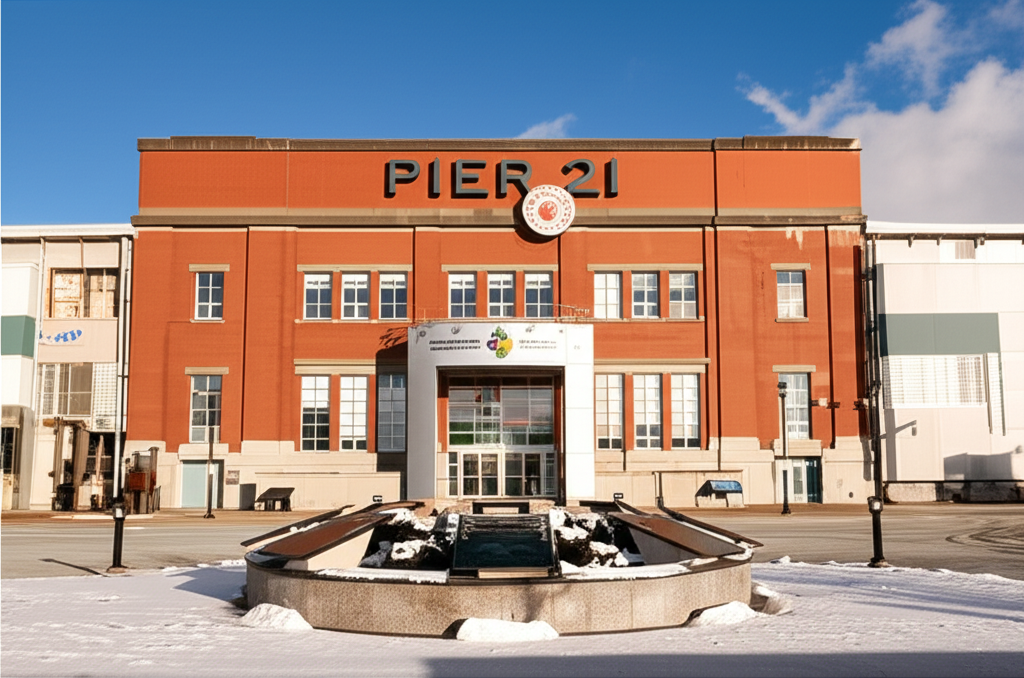Newcomer Digest
Archives
Canadian Museum of Immigration at Pier 21: A Halifax Landmark
SIGN UP FOR OUR NEWSLETTER
The Walls Can Talk: Inside Halifax's Canadian Museum of Immigration at Pier 21 |
More than just a building on the Halifax waterfront, Pier 21 is a living testament to the nearly one million souls who first touched Canadian soil within its halls, shaping the nation's story one journey at a time. |
There are places where history is not just read about, but felt.
Places where the echoes of footsteps and hushed conversations linger in the air, telling stories of hope, fear, and radical new beginnings.
The Canadian Museum of Immigration at Pier 21 in Halifax, Nova Scotia, is one of those profound places.
It stands today not merely as a museum, but as the last surviving ocean immigration shed in the country—a hallowed gateway through which nearly a million people passed between 1928 and 1971.
This is the very ground where one in five Canadians can trace a direct connection to their family's arrival in this country.
To visit is to walk in the footsteps of ancestors, to feel the weight of their suitcases and the lightness of their dreams.
The story of Pier 21 begins long before it became a celebrated national museum.
Opened in 1928, it was a state-of-the-art facility designed for a new era of transatlantic travel, replacing older, inadequate piers in the city's North End.
For 43 years, this building on the Halifax waterfront was the front door to Canada for countless individuals and families.
It was a place of immense emotional contradiction—a site of tearful goodbyes for soldiers departing for World War II and joyous, anxious reunions for the war brides who followed them home.
During the Second World War, nearly 500,000 Canadian military personnel shipped out from this very pier, their futures uncertain.
The pier later welcomed refugees fleeing oppression, including Hungarians after the 1956 uprising and Czechs escaping the Prague Spring in 1968.
Each person who walked through its assembly hall carried a story of what they left behind and a hope for what lay ahead.
After its closure in 1971, as air travel became the dominant mode of transportation, the building fell into disuse.
But the stories held within its walls were too powerful to be forgotten.
Thanks to the dedicated efforts of the Pier 21 Society, it was designated a National Historic Site in 1997 and reborn as a museum in 1999, eventually becoming Canada's sixth national museum in 2011.
Today, the Canadian Museum of Immigration at Pier 21 offers a deeply immersive experience through its two core permanent exhibitions.
The first, The Pier 21 Story, transports you back to the years of its operation.
You can step inside a replica of the colonist train cars that carried newcomers on the next leg of their journey westward.
You can open replica trunks to see the meager, precious belongings a child might have brought with them.
The air is filled with the recorded oral histories of those who were there—the immigrants, the staff, the volunteers.
It's an experience that aims not just to inform, but to evoke empathy.
The second core exhibition, The Canadian Immigration Story, takes a much broader view, examining 400 years of immigration to Canada, from first contact to the present day.
Crucially, the museum does not shy away from the more painful chapters of Canada's history.
It directly confronts the nation's exclusionary and often racist immigration policies that deemed some people—Jews, Asians, those with disabilities—as "undesirable."
This unflinching honesty provides a bitter but necessary counterpoint to the more triumphant narratives of new beginnings.
It forces a reckoning with the complexities of nation-building.
Beyond the permanent displays, the museum is a dynamic cultural hub on the Halifax Seaport.
It regularly hosts temporary and special exhibitions that explore the ongoing story of Canadian identity.
One such upcoming exhibit, "eat make share: a taste of immigration," set to open in May 2025, will delve into the surprising histories of Canadian foods and the connections between cuisine and immigration.
Another powerful installation, "#HopeandhealingCanada" by Métis artist Tracey-Mae Chambers, is on display until December 2025, adding a vital Indigenous perspective to the national conversation.
For many visitors, the most personal and moving part of the museum is the Scotiabank Family History Centre.
Here, expert researchers help people trace their own family's journey to Canada.
With access to ship manifests, passenger lists, and immigration records, uncovering a grandparent's name on a decades-old document can be a profoundly emotional moment of connection to the past.
It transforms a national story into a deeply personal one.
The museum's location on the vibrant Halifax waterfront boardwalk makes it a cornerstone of any visit to the city.
It sits among other key attractions like the Maritime Museum of the Atlantic, unique shops at Bishop's Landing, and the bustling Halifax Seaport Farmers' Market.
It’s a place to understand not just Halifax's history, but the very fabric of modern, multicultural Canada.
Walking through the quiet, cavernous space of the former arrivals hall, it’s impossible not to feel the presence of the past.
You can almost hear the cacophony of languages, the cries of children, the stamp of an immigration officer's approval that sealed a family's fate.
It is a monument to resilience.
It is a celebration of the courage it takes to leave everything behind for the promise of something new.
And it is a vital reminder that the story of immigration is not a closed chapter of history, but a continuous, evolving narrative that is still being written today.
Pier 21 is more than wood and steel; it is a repository of a million journeys, a million stories, a million hopes for a better life in a new land.
Frequently Asked Questions
What was the significance of Pier 21?
Pier 21 was the primary point of entry for nearly one million immigrants to Canada between 1928 and 1971. It is often called Canada's Ellis Island and serves as a powerful symbol of the country's immigration history. It was also the departure point for almost half a million Canadian soldiers during World War II.
Can you research your family's history at the Canadian Museum of Immigration at Pier 21?
Yes, the Scotiabank Family History Centre at the museum offers genealogical services to help visitors research their family's immigration story. Researchers can help you search for ship manifests, passenger lists, and other records to uncover details about your ancestors' arrival in Canada.
What can you see at the Pier 21 museum in Halifax?
The museum features two main permanent exhibitions: "The Pier 21 Story," which recreates the experience of arriving at the facility, and "The Canadian Immigration Story," which covers 400 years of Canadian immigration. There are also interactive displays, oral histories, a documentary film called "In Canada," and rotating temporary exhibitions on various cultural topics. |

